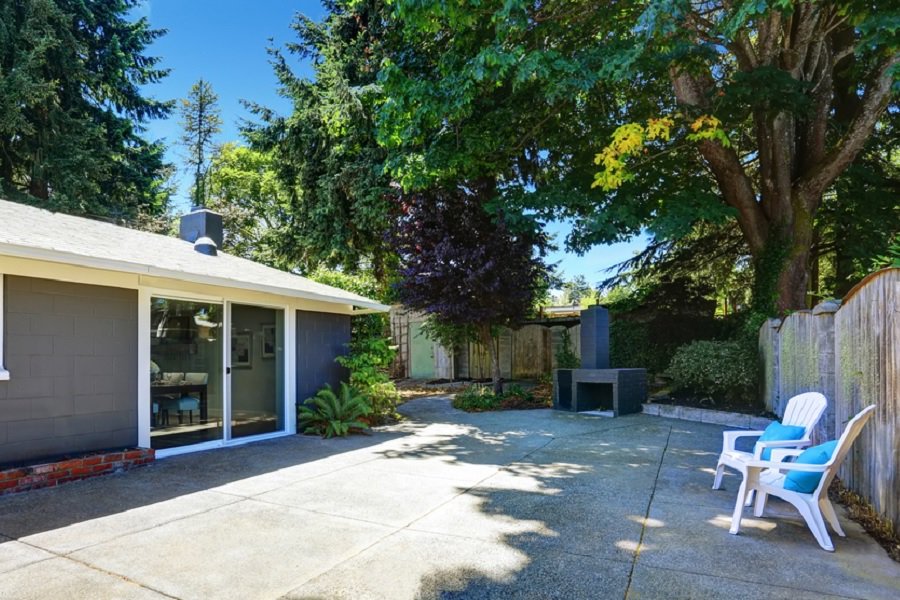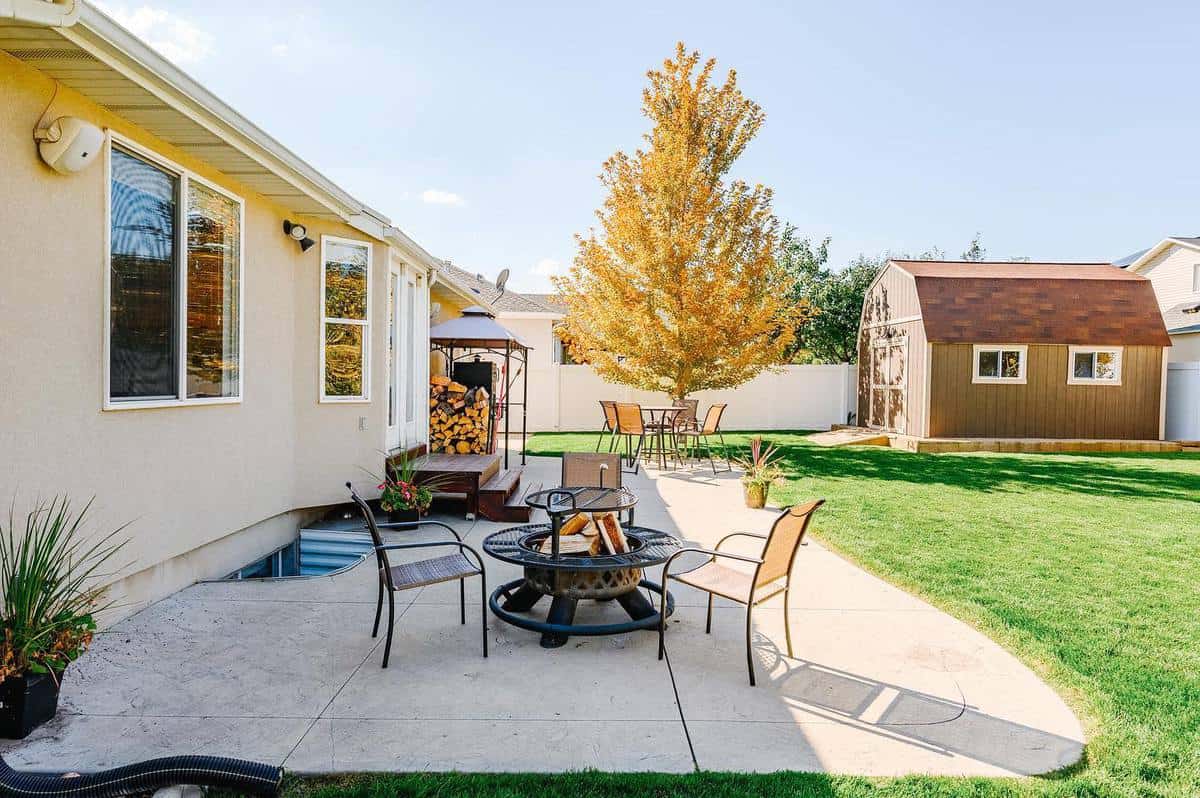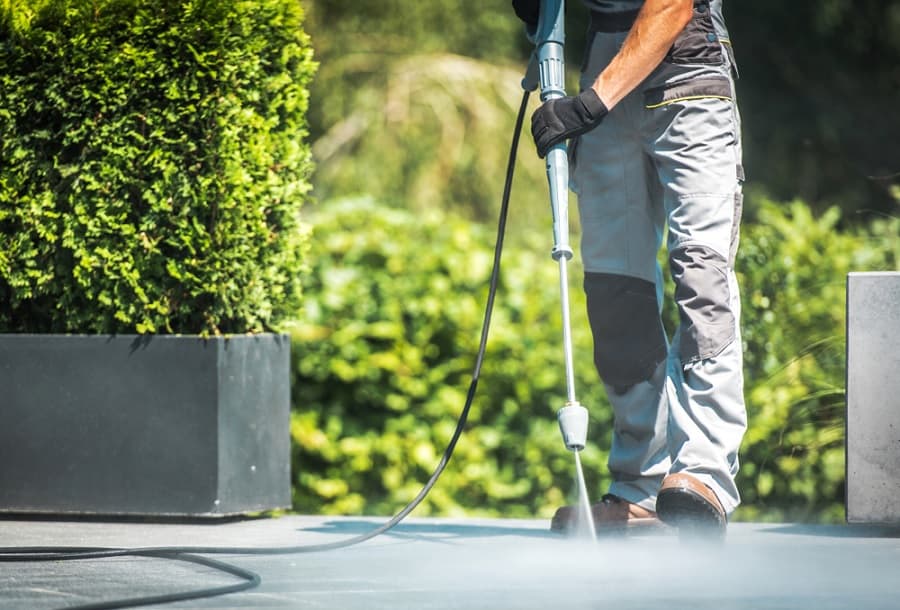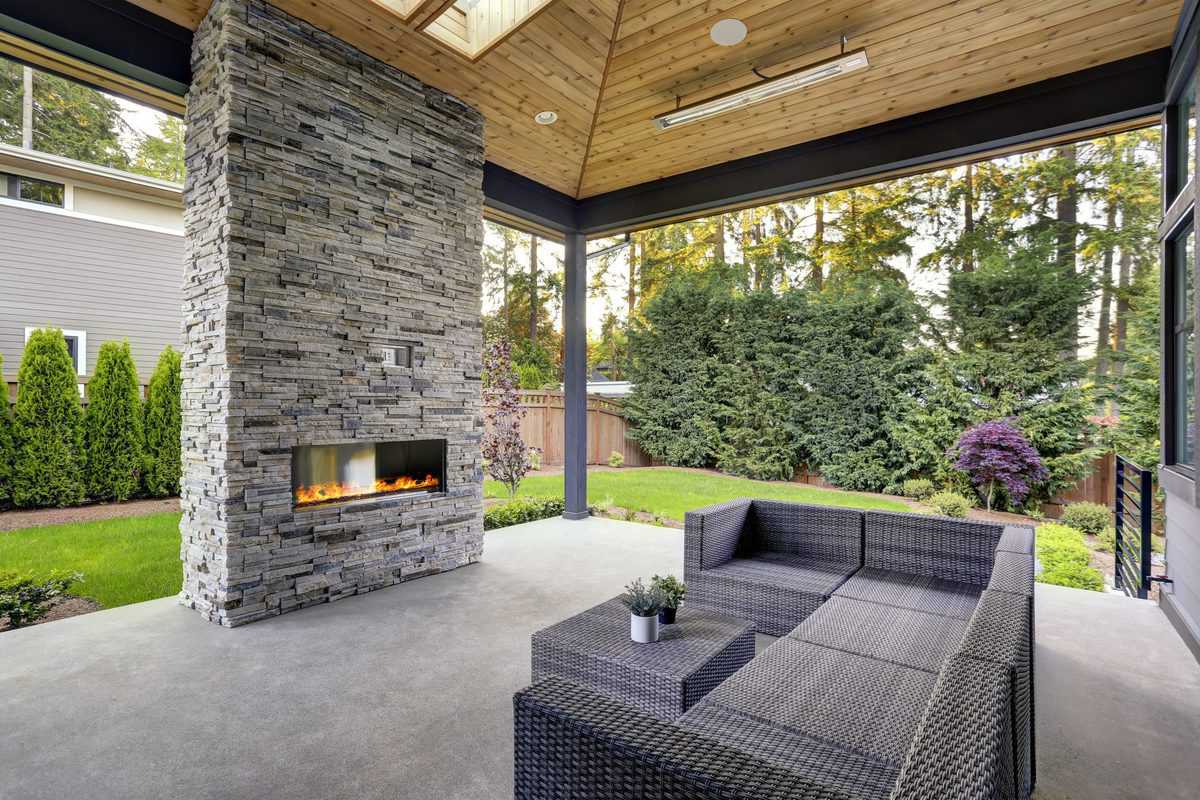
How To Clean a Concrete Patio
Concrete patios are popular for several reasons, namely their durability, affordability, and versatility. But even this low-maintenance material requires occasional cleaning to look its best.
Sticking to an annual cleaning schedule will keep your concrete patio looking great and prevent tough stains from leaving their mark.
Cleaning a large concrete slab can feel intimidating but is surprisingly straightforward. Once you get started, your patio could be looking brand new within a matter of hours!
See more about - 5 Best Patio Chairs
How to Clean a Concrete Patio

Step 1: Gather Supplies
The basic supplies you’ll need for cleaning a patio include:
- Garden hose
- Nylon scrub brush
- Protective clothing
- Broom
- Plastic tarp
- Sponge mop
- Bucket
- Cleaning solution
- Power washer (optional)
Several different cleaning solutions can be used on concrete. Popular recommendations range from liquid dish soap to professional-strength muriatic acid.
With that said, a 2:1 mixture of distilled white vinegar and baking soda is often all you’ll need to clean a concrete patio by hand.
Step 2: Prep the Space
You can’t jump straight into cleaning a patio without first preparing the space and its surroundings.
Remove all furniture and decor from the area to be cleaned. This is a great time to give your patio furniture a quick wipe-down as well. Cover heavy or otherwise immovable objects (e.g., large planters, fire pits, grills, etc.) with plastic sheeting as needed.
Sweep–or use a leaf blower–to remove all loose dirt, leaves, pebbles, and branches from the patio surface.
Before getting started, don’t forget to take the time to protect the landscaping around your concrete patio.
Temporarily covering delicate plants will protect them from harsh cleaners and power washer damage. It’s also a good idea to cover or remove garden decor near your patio’s perimeter.
Step 3: Apply Cleaning Solution
Combine the vinegar and baking soda in a large bucket. Slowly pour the mixture over the concrete patio, using a sponge mop to spread it over the entire surface.
Allow the cleaning solution to sit for up to 30 minutes for the best results.
Step 4: Scrub
With a nylon-bristled brush, scrub the entire patio to remove build-up and tough stains.
Using a nylon-bristled brush is incredibly important. Metal bristles can scratch the surface of concrete and leave behind unsightly rust stains.
Step 5: Rinse and Dry
Before the cleaning solution has a chance to dry, rinse the entire patio using a garden hose or pressure washer. Always start on the lowest setting when using a pressure washer to prevent damage.
Address any remaining stains as needed.
Do not replace any furniture or decor until the patio is completely dry. Doing so increases the risk of new stains appearing.
See more about - How To Enclose A Patio
When To Clean Your Concrete Patio

Clean your entire concrete patio once per year, and as needed, to prevent a build-up of stains and other small messes. Spring is generally the best time to deep-clean a concrete patio.
Spot cleaning is a great way to keep your patio looking great throughout the season. Clean your patio again in the fall if it collected dirt and grime throughout the summer.
Clean your patio on a temperate day. Avoid cleaning when the sun is too bright as the cleaning solution will evaporate.
Tips To Remove Tough Stains From a Concrete Patio

Rust
Metal objects like grills, fire pits, and furniture can leave behind unsightly rust stains on your concrete patio. Depending on the severity of the staining, scrubbing with a simple cleaning solution may not be enough.
Acid is one of the most effective treatments against rust. Proceed with caution–using diluted treatments and a soft-bristled brush–if your concrete patio is painted.
Start with a household acid like pure lemon juice or white vinegar. Allow the acid to sit on the stain for ten to 15 minutes before scrubbing with a brush. Repeat as needed.
Tough stains will need to be treated with a commercial-strength acid. Oxalic acid is the most popular option. Oxalic acid (and other commercial products) can be applied using the same method as lemon juice or vinegar. However, be sure to wear protective gear and follow all provided safety guidelines.
Always apply these treatments on a clean surface. Excess dirt and debris will only prevent the acid from reaching its intended target.
Grease
The most effective way to remove grease or oil from a concrete patio largely depends on the age of the stain.
Treat new spills by covering the stain with baking soda. The baking soda will absorb much of the grease. Once the baking soda has sat for 30 minutes, scrub the area with liquid dish soap and water to remove the rest of the stain.
While you can try to remove older stains using the above method, many will require the use of strong chemical degreasers. Select a product suitable for use on concrete and be sure to follow the provided safety guidelines.
Mold and Mildew
Mold and mildew can form anywhere moisture is present, including underneath patio furniture and decor. While most of these stains can be handled with a powerful garden hose attachment, some will persist without special treatment.
Using a mixture of warm water and bleach, soak the affected area and let sit. Scrub the concrete’s surface with a stiff-bristled brush, paying close attention to gaps where mold spores may be hiding.
You can also use a commercial mold and mildew remover to cut through persistent stains. Be sure to choose a product formulated for the outdoors.
Moss
While not technically a stain, moss can be a nuisance on any patio that stays consistently dark and cool throughout the day.
Before breaking out any chemicals, try addressing the moss with boiling water and a stiff brush. You can also sprinkle baking soda over your patio—let sit for 24 hours—to kill the moss.
If moss returns, liquid bleach can be applied to the surface to prevent regrowth. This solution typically works for a year.
Stronger chemicals like zinc sulfate monohydrate or ammonium sulfate can be purchased at most garden supply stores. These treatments will prevent moss regrowth for several years after application.
Rest assured, however, that moss growth won’t harm your concrete patio if you choose to leave it be.
See more about - 43 Patio Shade Ideas



